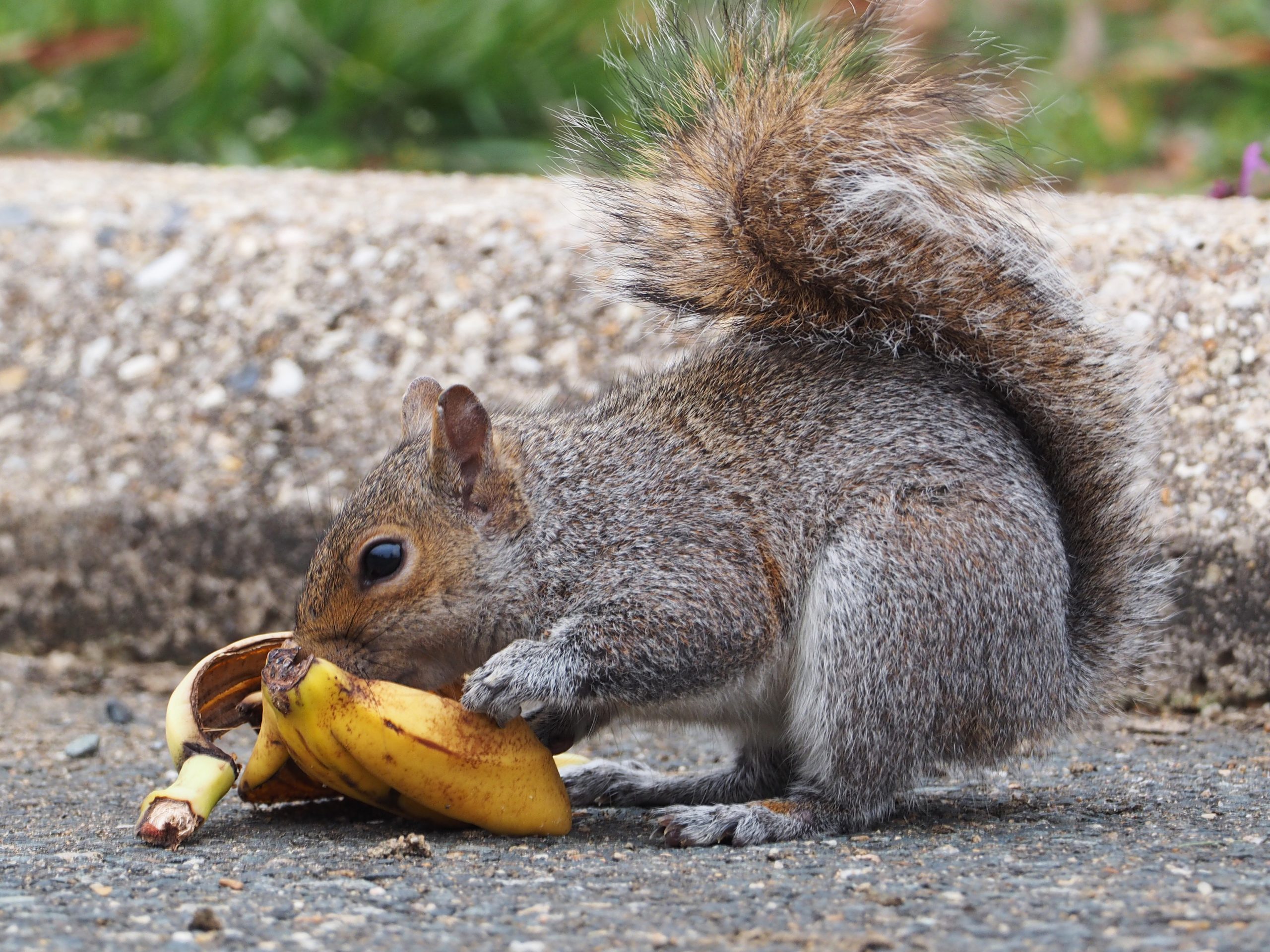
The eastern gray squirrel (sciurus carolinensis), native to the eastern United States and southern Canada, is causing controversy an ocean away in the United Kingdom.
First introduced to the UK in 1876, the gray squirrel population has soared while the Eurasian red squirrel (sciurus vulgaris) population, native from the UK to northwest China, has declined.

As pointed out in Science, Brits cherish the red squirrel. One notable example is the classic children’s book “The Tale of Squirrel Nutkin” by Beatrice Potter. Nutkin, the protagonist and a red squirrel, bothers Mr. Brown, an owl, who attacks Nutkin. Nutkin is able to escape Mr. Brown’s grips and rejoin his red squirrel family.
Nutkin may have escaped Mr. Brown, but non-fictitious red squirrels succumb to squirrelpox (parapoxvirus) transmitted by gray squirrels, who also outcompete them for food and territory. Gray squirrels are immune to the squirrelpox virus, shedding it “in scat and from scent glands, and reds somehow pick it up.” The virus is deadly, killing them in mere weeks.
The irony of the squirrel debacle is that gray squirrels are not really the problem—humans are. The gray squirrel is villainized for their relatives’ misfortunes, but humans brought the gray squirrel to the UK. Herbrand Russell, the Duke of Bedford, “released and gifted many greys around the UK” in the late 1800s.
Now, the gray squirrel has been a fixture of the UK for around 140 years. Quite a long time. Several other non-native species are now naturalized mammals, including the brown hare, the edible dormouse, sika deer, and rabbit.
Should the gray squirrel be culled due to human actions? How are gray squirrels different from red squirrels? These ethical quandaries complicate the gray squirrel’s place in the UK.
Nevertheless, the red squirrel is an important part of the natural history and heritage of the UK that deserves to live and thrive just as the gray squirrel does. Across the UK, conservation efforts—like the ongoing work of Saving Scotland’s Red Squirrels, The Wildlife Trusts, and the four-year project, Red Squirrels United—work to protect the red squirrel population from decimation.
The gray squirrel may be detested in Britain, but it is commonplace and loved across Appalachia and the eastern U.S. At college campuses like Ohio University, alumni remember how entertaining nosy gray squirrels can be. One friend recounted how squirrels lived in the wall of their house, making funny noises as they fought and moved about. I recall a time that I saw a squirrel running with an entire pizza slice in their mouth. The gray squirrels certainly captured our attention, but they are not the only native squirrel in Appalachia.

North America is also home to a red squirrel (tamiasciurus hudsonicus). Half the size of the gray squirrel, the American red squirrel inhabits a wide range, from the forests of Alaska and the Rocky Mountains to the east coast north of Georgia.

At home in Appalachia, southern Canada, and northern Mexico, the fox squirrel (sciurus niger) is the largest tree squirrel with three distinct color patterns. Although larger and differently colored, the fox squirrel is often confused with the gray and red squirrels.

The northern flying squirrel (glaucomys sabrinus) is an endangered species found in a small section of Appalachia in North Carolina, Tennessee, and Virginia. The southern flying squirrel (glaucomys volans) is found more widely and is often confused with their northern relative. Both species are nocturnal.
Unlike the UK, with only one native squirrel species (the red squirrel), Appalachia’s forests contain the habitat that tree squirrels thrive in. Next time you take a hike or explore an urban area, consider how special it is that you as an Appalachian get to encounter so many different types of squirrels.
Annie Chester is a writer and co-founder of expatalachians. She writes about the environment and culture in Appalachia and abroad.
Subscribe to The Patch, our newsletter, to stay up-to-date with new expatalachians articles and news from around Appalachia.


